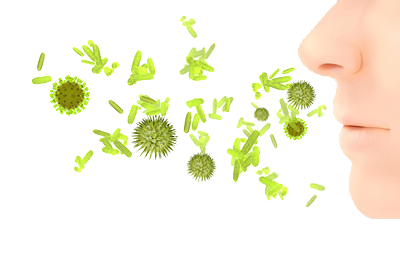Allergies don’t Hibernate
Brrr. Winter has arrived. 2019 brought chilly temps, the worst in years. Colds, viruses and the flu came with it. Sneezing? Sniffling? Probably sick, right? But wait. There’s no fever. You don’t feel sick. And you’ve been congested for a long time. Think again. Naturally, we’re indoors much more of the time these days. And although this increases exposure to viruses, it also means heavier exposure to indoor allergens. Repetitive sneezing and persistent congestion likely is a sign of allergies, or more precisely, allergic rhinitis, the term for nasal allergies.
We all are familiar with windborne pollinating plants releasing pollen during certain times of the year, causing seasonal allergic rhinitis, responsible for the sneezing in parking lots, on athletic fields and during lawn sales. First, it’s the blooming of trees in the spring, then grass going to seed. There’s a brief lull during the heat of the summer, followed by fall weed pollen, until the first frost when these plants become dormant.
That doesn’t mean there aren’t allergies in the winter; they’re just not seasonal. Mold, dust mites, cockroaches and furry pets are here all the time. We’re exposed to these potential sources of allergies every day, making their effect less noticeable. They are sneaky, creeping up on us more slowly, making those with allergies just as miserable. This is why testing for allergies is essential.
Why wouldn’t I know if I have indoor allergies? One reason is the difference in chemistry between intermittent versus daily exposure. Think of the sudden, brief exposure to a dog at a piano teacher’s house versus living at home with a dog. Occasional exposure to an allergen leads to an abrupt release of histamine from mast cells. This causes immediate itching, sneezing, tearing, runny nose, swelling within minutes. Sustained, daily exposure, day in, day out, leads to chronic inflammation over time from leukotrienes, chemokines, interleukins, and other mediators, whose effects occur more slowly over hours and days. There’s less of an obvious histamine response, leading to chronic swelling and inflammation. (That’s also why antihistamines can only do so much, but leave that for another post.)
Reducing allergen exposure isn’t so simple, either. Removing perennial allergens can be difficult. Identify, then remediate mold in basements and damp areas. Repair leaks or moisture may again trigger mold spore following snow melts or with heavy spring rains. Eliminate pests (e.g., roaches). Dust mites cannot survive in air ducts, but prefer bedding and linens, snuggling up to a warm body that also provides their food: sloughed dead skin scales. Wash linens regularly to minimize exposure.
Other allergens may prove more difficult to remove; whether Max is shoved off the bed (again), or Fluffy, the beloved furball simply turns her nose up and moves on to the kitchen, they all leave a trail behind. Tears, saliva, urine skin sweat glands of animals from all contain allergens that stick on surfaces. Several cat allergy proteins, including Fel d 1, actually remain airborne 15-20 minutes after the cat leaves the room. Carpeting, upholstery, draperies, blankets, and pillows act as reservoirs, absorbing allergy proteins. Airborne cat protein even sticks to painted surfaces. Litter boxes, gerbil and hamster cages all are sources of allergens.
Dry winter conditions also exacerbate non-allergic rhinitis. Nostrils act as filters, collecting fine dust particles. Fireplaces and pellet stoves can emit smoke and fine particles, recycling throughout the house through forced air heating. Adding moisture with a humidifier may reduce this, and certainly helps irritated mucous membranes, but be vigilant for mold growth in the base of the humidifier.
Contact us at Annapolis Allergy & Asthma for evaluation and treatment of perennial or seasonal allergens; let us help you enjoy life more fully!
Copyright Duane Gels 2019





